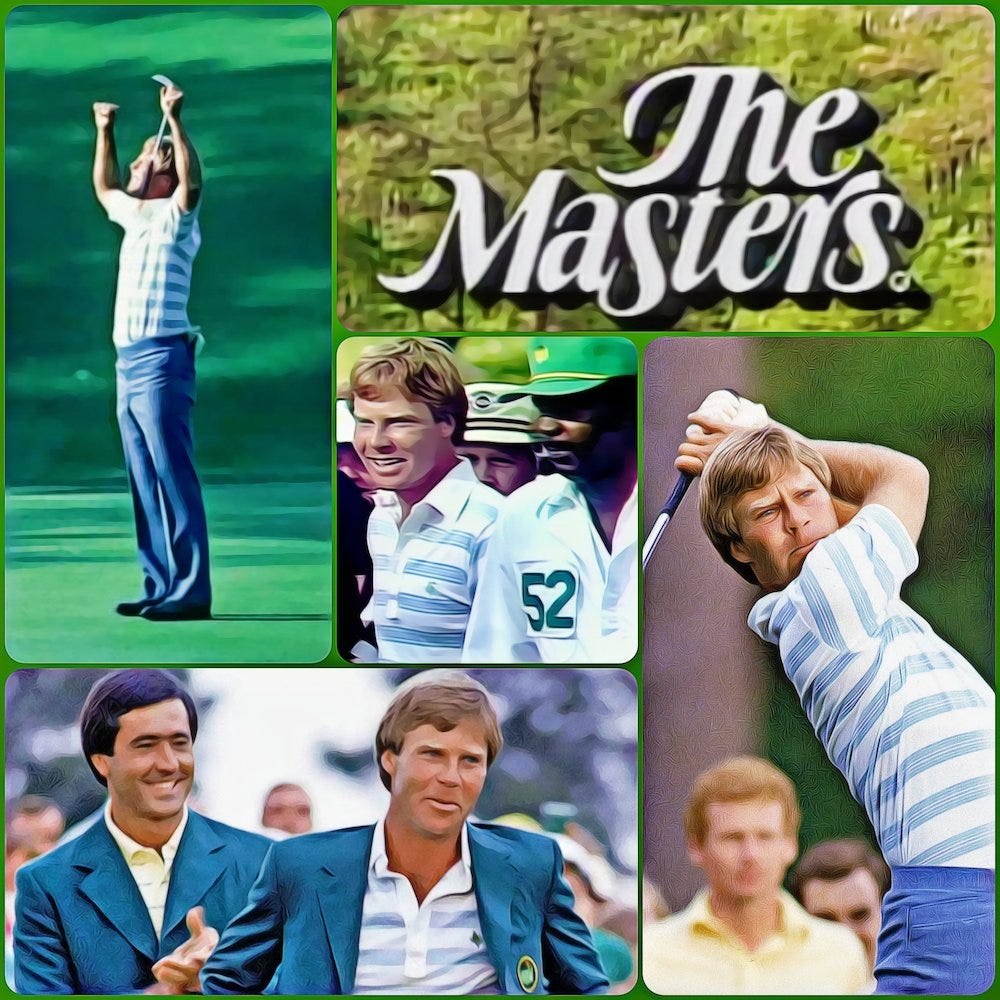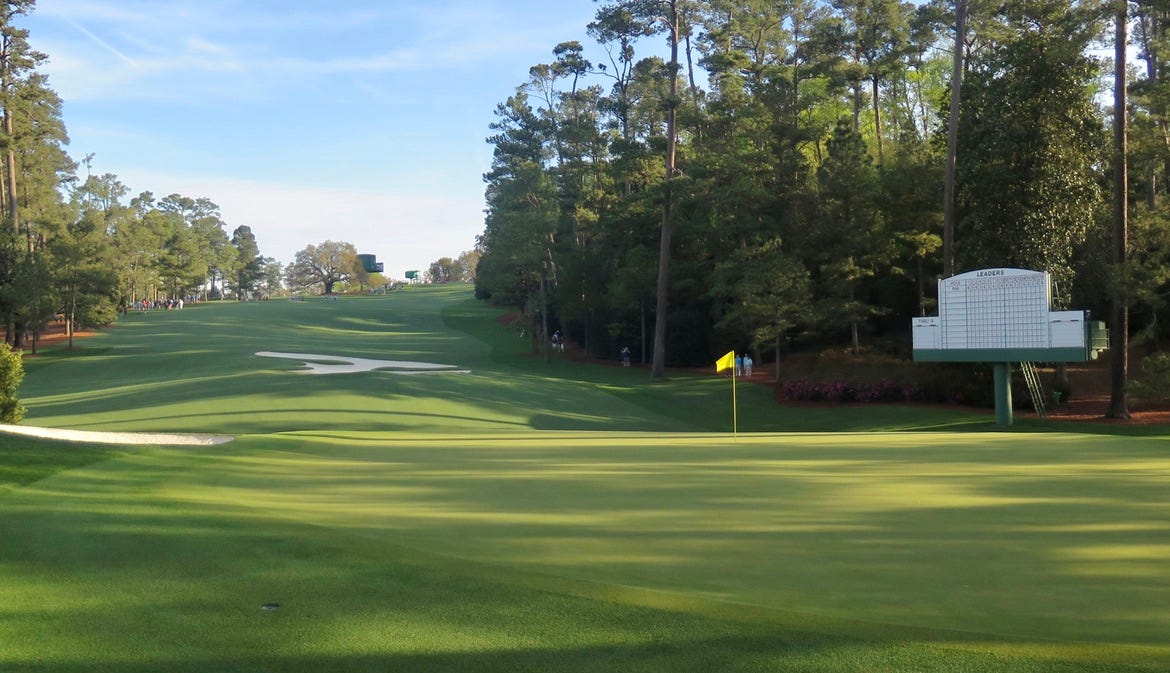Quad Questions With Ben Crenshaw
On the 40th anniversary of his first Masters win he discusses the key final round moments, this 2024 Champions Dinner and the key to all great putters.
On his thirteenth try Ben Crenshaw finally got to wear the Green Jacket.
Plagued by an inability to start well—including the year prior when he opened with 76 and still tied Tom Kite for second—Crenshaw opened the 1984 Masters with a bogey-free 67. He followed with a missed-opportunity 72 and a third round 70 to enter the final day two strokes back of fellow Texas Longhorn and Harvey Penick disciple Kite. Mark Lye was one off the lead, putting Crenshaw in the second-to-last grouping with Nick Faldo while Kite and Lye went out last.
Kite, two years older at 34, was on a string of four straight finishes of fifth or sixth before his ‘83 runner-up finish.
Crenshaw had five top-10’s and two runner-ups to that point in his Masters career.
The final round started pretty quietly before eight players were within three of a lead held by Crenshaw after birdies at the 8th and 9th. Larry Nelson, the previous year’s U.S. Open winner, birdied the 11th to join Kite a stroke back of Crenshaw. The Marietta, Georgia native was then serenaded by CBS’s Brent Musburger and Tom Weiskopf for his underrated brilliance, only to land a 6-iron mid-Rae’s Creek en route to a double-bogey five.
Mere seconds after Nelson’s lamentable disaster, CBS cut to Crenshaw at the 10th green facing a 60-footer for birdie. Crenshaw proceeded to make what announcer Bob Murphy immediately pronounced as “one of the greatest putts I’ve ever seen.” The putt and reaction has become a staple of highlight reels featuring all-time Masters moments.
An 11th hole bogey was offset by birdies at 12 and 15, allowing Crenshaw to win by two over Tom Watson, with David Edwards and Gil Morgan sharing third.
The Quadrilateral asked Crenshaw about the key shots, the mysterious 10th green, this year’s Champions Dinner, and the state of putting in professional golf.
GS: What moment from the 1984 final round do you think about most?
BC: The putt on number 10, which was totally unexpected. I would've killed for a two-putt there. I just birded number nine and I just didn't want to drop any shots. And it looked like I could drop one easily there. Somehow that putt went in. I had to calm down for two holes after making that putt.
The putt on 10:
But the one that really gave me so much confidence that day was the second putt on number 14. I had hit a terrible approach shot on the top of the green and had to putt down the hill. I hit a bad putt first and left myself with 12, 13 feet for a second putt with a good break right-to-left. And when that one went in I was determined not to lose a shot to the house. And it calmed me down quite a bit.
The putt on 14:
GS: Why is 10 such a hard green to putt? It doesn't look severe in person and yet it’s always mentioned as one of Augusta National’s toughest greens to manage. Is it because it’s seemingly always in shade compared to most of other greens there?
BC: When you're putting uphill on that green, somehow you always leave it short. You've got to concentrate on getting it up there. It's a different green. It doesn't have any undulations. It’s got a tilt from back-to-front and right-to-left, and you can leave yourself below the hole so easily. [In 1984] I had to make myself try to leave the putt to the right to let it break. I didn't want it to dive under the hole. And yes, the light has something to do with it. If you're playing late, you're always going to get shadows.
I was there a couple of weeks ago and I looked at that putt again and said, “God, how'd that make this thing?”
GS: You’re hosting the Champions Dinner again after taking over duties from Byron Nelson and I know you like to highlight anniversaries with the group. Did Mr. Nelson start that particular tradition and how does this talk of anniversaries work when you’re a modest host?
BC: He did. I don’t know if you met a gentleman who was in the press room for a long time there: Bill English. He did all the statistics and Byron was big on statistics. He would tell a lot of things that the Masters champions had achieved through the years and he would always reference one of the champions, what they were doing lately, and how they've done. So he always wanted to highlight the Master's champions.
This year I'm going to tell some Jackie Burke stories because he was so close to me and all the champions enjoyed being around Jackie. I want to revive those stories and I'm going to just say, once again, how well the champions have done with Scottie Scheffler sitting there. It's unbelievable what he’s doing. We have a little bit of a Spanish connection with Jon Rahm and knowing how much Jon thinks of his fellow countrymen starting with Seve, Jose Maria and Sergio, so I’ll tie that in. I'm also going to note how well Jon has played over the past four years, which has also been unbelievable.
Mostly I just start things off to break the ice. Last year, there was a little tension. Nobody knew where things were going last year, and nobody knows where it’s all going now either. I tell you what, it all makes me feel like I played in the gutta percha era. [Laughs]
GS: Bob Charles and Tiger are exceptions with pretty classic pendulum strokes, but most of the all-time great putters had what would be considered extremely unorthodox styles today. Given how many great players seem to be struggling with putting, what do you see? Are they trying to be too mechanically perfect?




